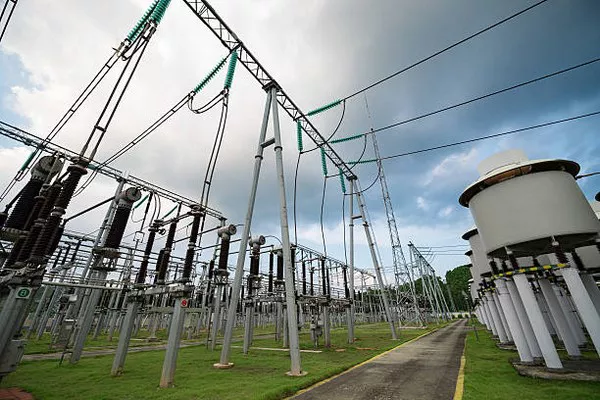In the realm of electrical systems, the term “Class 2 transformer” carries significant importance. It represents a vital component that plays a crucial role in ensuring the safe and reliable operation of various electrical devices and systems. To comprehend its significance, one must delve into the fundamentals of what a Class 2 transformer is, its functions, applications, and why adhering to Class 2 standards is essential for electrical safety.
Defining the Class 2 Transformer
At its core, a Class 2 transformer is a type of power supply device designed to convert high-voltage alternating current (AC) into low-voltage direct current (DC). This low-voltage DC output typically falls within a predefined range of electrical values as per safety standards. These values include a maximum voltage and current limit to ensure the safe operation of connected devices.
Class 2 transformers are governed by strict safety regulations and standards to prevent electrical hazards and fire risks. They are primarily used for powering low-energy, low-voltage electrical equipment such as doorbell systems, thermostats, security cameras, and LED lighting. To understand the significance of Class 2 transformers, let’s explore their key characteristics and functions.
Key Characteristics of Class 2 Transformers
Limited Output: Class 2 transformers are designed to provide a limited amount of electrical power to the connected load. They typically have a maximum output voltage of 30 volts alternating current (VAC) or 42.4 volts direct current (VDC) and a maximum output current of 100 volt-amperes (VA). These limitations are crucial for preventing excessive electrical energy that could pose a hazard.
Overcurrent Protection: Class 2 transformers are equipped with overcurrent protection mechanisms that safeguard against electrical overload. In the event of a fault or short circuit in the connected load, these transformers limit the current to prevent damage to the equipment and mitigate fire risks.
Encapsulation: Class 2 transformers often feature encapsulated designs. This means that their internal components, including the primary and secondary windings, are sealed within a protective resin or encapsulation material. This not only enhances durability but also prevents users from coming into direct contact with live electrical components.
Double Insulation: Class 2 transformers are designed with double insulation to provide an additional layer of protection against electrical shock. This redundancy ensures that even in the unlikely event of one insulation layer failing, a secondary layer is in place to prevent contact with live parts.
Limited Energy: The energy output of Class 2 transformers is constrained to a safe threshold. This limitation ensures that even if a fault occurs, the released energy is insufficient to ignite flammable materials or cause severe harm.
Applications of Class 2 Transformers
Class 2 transformers find extensive applications in various industries and settings due to their safety and reliability. Some common applications include:
Low-Voltage Lighting: LED lighting systems, landscape lighting, and under-cabinet lighting often rely on Class 2 transformers to provide safe, low-voltage power.
Doorbell Systems: Class 2 transformers are a staple in doorbell systems, ensuring the reliable operation of doorbell chimes and video intercoms.
HVAC Controls: Thermostats and heating, ventilation, and air conditioning (HVAC) control systems utilize Class 2 transformers to power sensors and control circuits.
Security Systems: Security cameras, access control systems, and alarm panels rely on Class 2 transformers to maintain their functionality while prioritizing safety.
Fire Alarm Systems: Class 2 transformers are integral to fire alarm systems, powering detectors, control panels, and notification devices.
Automated Building Controls: Building automation and control systems often use Class 2 transformers to power sensors, actuators, and control modules.
Why Class 2 Transformers are Crucial for Electrical Safety
Reduced Electrical Hazards: The limited energy output of Class 2 transformers significantly reduces the risk of electrical shock, fire, and damage to connected devices. This is particularly critical in residential, commercial, and industrial settings where safety is paramount.
Compliance with Standards: Class 2 transformers must adhere to stringent safety standards, including UL 1310, UL 1585, and NEC (National Electrical Code) Article 725. Compliance ensures that these transformers meet the necessary safety requirements, providing peace of mind to both manufacturers and end-users.
Protection Against Overcurrent: Overcurrent protection features in Class 2 transformers prevent catastrophic failures in the event of a short circuit or overload. This protective mechanism safeguards not only the transformer but also the entire electrical system.
Fire Prevention: By limiting the energy output, Class 2 transformers significantly reduce the risk of igniting flammable materials in their vicinity. This is crucial for applications such as lighting and HVAC control in residential and commercial spaces.
Enhanced Durability: The encapsulated design and double insulation of Class 2 transformers enhance their longevity, reducing the need for frequent replacements and maintenance.
Conclusion
In the world of electrical systems and devices, Class 2 transformers serve as indispensable components for ensuring safety, reliability, and compliance with stringent standards. Their ability to convert high-voltage AC into low-voltage DC while limiting energy output is paramount for powering a wide range of low-energy electrical equipment. Whether it’s illuminating your home with LED lighting or keeping your security system operational, Class 2 transformers silently work behind the scenes, prioritizing your safety and the longevity of your electrical devices.

